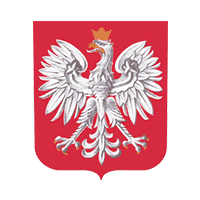Piotr KUJAWSKI, Jerzy PICUR
The primary duty of a mining surveyor in the maintenance of mining and general facilities is drawing up surveying documentation, which has direct impact on the safety of maintenance procedures and of the staff, on general safety and environment protection. This documentation stems from an extensive range of obligations attributable to surveying services in all types of mining facilities, as overseen by a mining surveyor. What is noticeable is that pertinent legislation stipulates that the mining surveyor should closely cooperate with the maintenance officer in the respective mining facility. For years, these two officers have based their communications on the surveying log present in every mining facility, where the mining surveyor notifies the maintenance management of any irregularities in maintenance and on any threats identified, whether natural or mining. The extraordinary importance of the mining surveyor is emphasized by the fact that, similarly to the qualifications of a mining geologist and a maintenance officer in a mining facility – their qualifications are certified by the President of the State Mining Authority. Both in Poland and abroad, a mining surveyor is perceived as a public trust profession, responsible for crucial tasks and information – from the point of view of a mining company. Documents signed by the mining surveyor are a guarantee of professional reliability and conformity with effective regulations. The mining surveyor often meets with local government bodies and local communities affected by the mining activities, providing explanations and information, this satisfying essential social needs which have direct impact on general safety and environment protection.
Rafał ŁAGOSZ
In the 1960s, an intensive development of the mining industry affected the subject reception basins, i.e. Bierawki and Szotkówki (USCB, Poland). The effects of mining activities are visible in these areas, as best exemplified by marshes and water-retention areas that are formed in river valleys. Technical methods of eliminating mining damage of this type have been used so far, including backfilling of settlement niches with gangue, dredging and regulating watercourses, building entrenchments, pumping water from depressions. The article indicates that river valleys can be one of many elements of a postindustrial landscape, one that is suitable for reclamation to create enclaves or natural value and recreational areas for the residents of neighboring estates or agglomerations. Adequate measures implemented in areas where the subsoil has settled in result of coal mining in watercourse valleys can be used to reduce flooding phenomena in the rivers concerned. In this situation, negatively perceived areas can become retention grounds that increase flood control for areas situated below.
Ireneusz GRZYBEK
W artykule porównano metodykę szacowania zasobów metanu w opracowaniach U.S. EPA i PIG oraz podjęto próbę przybliżonej oceny bardziej realnej wielkości tych zasobów w zagłębiach węglowych Polski. Za najbardziej prawdopodobną ich wielkość (do głębokości ok. 1650 m) uznano wartość ok. 1189,1 mld m3 w GZW (852,2 mld m3 w pokładach węgla, a 336,9 mld m3 w substancji organicznej rozproszonej w skałach płonnych), 156,26 mld m3 w LZW oraz co najmniej 17,12 mld m3 w DZW (razem: 1362,45 mld m3). Przy obecnym stanie technologii możliwe do ewentualnej eksploatacji będą jednak tylko zasoby do głębokości 1250 m. Dla GZW można je ocenić na maksymalnie 503,82 mld m3.



